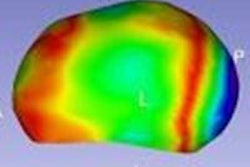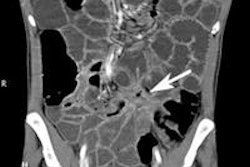Dear CT Insider,
A new BMJ study shows that cancer risk in young people scanned with CT rose significantly in the years after the exam, although the total number of cases remained small. The study represents one of the largest troves of data on CT cancer risk to be analyzed since atomic bomb survivor data came online. Find out who was affected, and which cancers saw an uptick, by clicking here.
Lung cancer screening also is in the news, with a new analysis of National Lung Screening Trial data showing that CT detects twice the number of cancers as x-ray. Find out more here. Also, a study from the University of Toronto agreed wholeheartedly.
At the Veterans Affairs Boston Healthcare System, researchers decided to broaden the lung cancer screening criteria to include people with fewer than 30 pack-years of smoking history. So far, at least, the move has not reduced the number of cancers detected by CT. Click here for more details.
Finally, adding its voice to the chorus of organizations supporting routine CT lung cancer screening, the American College of Chest Physicians has signed on to the effort to make screening a reality in the U.S.
Computer-aided detection and CT are coming to the rescue again in treatment planning for infants with craniosynostosis, or premature skull fusion, according to an article by senior editor Erik L. Ridley.
Another advance taking shape is in 4D wide-area CT of joints, which is opening new windows in the understanding of musculoskeletal disorders and the complex interactions between bone and soft tissues. Find out more here. And click here for new research on automated CT dose mapping.
Considering the torrent of new CT research coming online these days, one would imagine that CT technologist training is being ramped up to accommodate the new information required to acquire images correctly, especially in this new era of dose consciousness. But one would be wrong. CT is hardly a blip on the radar screen of training for technologist certification, and it's likely to remain so, according to a report from the recent Virtual Symposium on Radiation Safety and Computed Tomography.
But even the best-trained CT technologists might not be ready for the onslaught of ever-changing and sometimes conflicting information coming from attending physicians, vendors, radiologists, and medical physicists who join forces to craft CT protocols. Learn more about the dilemma and what you can do about it in this issue's Insider Exclusive, brought to you before our nonsubscribers can get anywhere near it.
Last but not least, we bring you the story of a radiologist on the front lines of trauma care in the hours following the Boston Marathon bombings. And we invite you to scroll down through the links below for the rest of the news in CT, all here in your CT Digital Community.




















